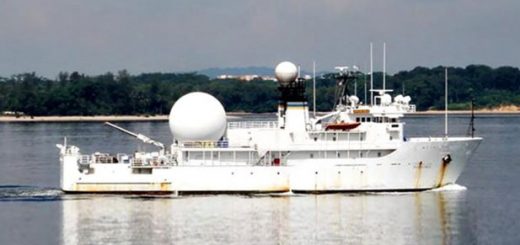USS Gerald Ford Supercarrier Might Ditch Shock Testing Before Deployment
The US Navy’s Ford-class aircraft carrier will not be required to go through shock trials, if the House Armed Services Committee gets its way.
The 2018 National Defense Authorization Act (NDAA) is getting marked up by lawmakers who seem to believe the US carrier fleet is stretched so thin that it needs the USS Gerald Ford operational as soon as possible, Defense News reports.
The 2016 NDAA stipulated the Ford would need to go through full-ship shock trials before joining the fleet. Notably, the Navy’s director of the Office for Testing and Evaluation (OTE) had pushed for shock trials to be a mandatory step before the ship is mobilized as part of the larger US Navy carrier force.

It’s hard to understand why US lawmakers believe the current carrier fleet to be inadequate. First, it is already the world’s largest by several multiples. There are 10 Nimitz-class supercarriers on the high seas right now. Wasp- and America-class helicopter carriers bring the total number of aircraft carrying ships in the US fleet to 19, and that doesn’t even touch on the Navy’s arsenal of fast-attack and nuclear-armed submarines lurking beneath the ocean’s surface.
The Russian Navy has one carrier, the Admiral Kuznetsov, while the Chinese People’s Liberation Army Navy has two, one of which is mostly used for training, the second of which hasn’t been deployed. The UK has two Queen Elizabeth-class carriers in the pipeline that London hopes will be operational in the early 2020s. Fellow NATO ally France has one carrier as well, the Charles de Gaulle, the only nuclear-powered carrier in the world that doesn’t belong to the US Navy.
India has one carrier that’s basically obsolete, having been built by the UK in World War II before later being pawned off to New Delhi. But it recently commissioned a modernized former Soviet carrier that can provide significant air support if needed. Japan, South Korea, Australia, Italy, Brazil and Spain field a handful of helicopter and fixed-wing aircraft carriers, as well.

But Washington is thinking ahead. “Once the Ford comes online you can have the East Coast carriers essentially cover the Middle East with short gaps and have the West Coast carriers fill the gaps in the Pacific while [the USS] Reagan is in its spring maintenance availability,” Bryan Clark of the Center for Strategic and Budgetary Assessments told Defense News.
Skipping the trials would expedite the Ford’s deployment timeline from 2022 to 2019 or 2020, the news outlet added.
Source: SPUTNIK By Military & Intelligence News – sputniknews.com – 22 June 2017



















